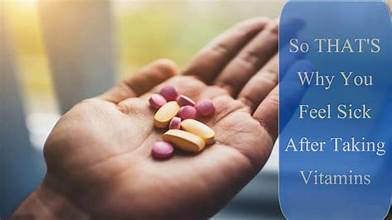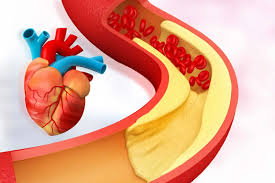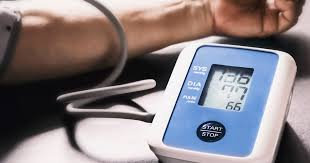
More than 100 million Americans grapple with high cholesterol. This silent condition often shows no symptoms, yet it plays a major role in heart disease, the leading cause of death worldwide. But what exactly is cholesterol? Is it all bad? The truth is, cholesterol is vital for your body. The real challenge comes from understanding its different types and how to keep levels balanced.
This article will help you make sense of cholesterol. We’ll explore its good and bad forms and, most importantly, show you how smart food choices can help manage your levels. Getting a grip on this topic can be one of the best steps you take for your heart health.
What is Cholesterol and Why Does it Matter?
Cholesterol’s Essential Role in the Body
Cholesterol is a waxy, fat-like substance that floats through your bloodstream. Your body needs it to build healthy cells. It’s a key ingredient for making important hormones, like estrogen and testosterone. Cholesterol also helps your body produce vitamin D and creates bile acids, which aid in digestion. Without it, your body wouldn’t function right.
Sources of Cholesterol: Dietary vs. Body Production
Your liver makes most of the cholesterol your body needs. It produces just the right amount to keep things running smoothly. You also get cholesterol from the foods you eat, especially animal products like meat, eggs, and dairy. While dietary cholesterol contributes, its impact on your blood cholesterol levels is often less than that of saturated and trans fats found in many foods. Your body’s own production is usually the main player.
Understanding Cholesterol Numbers: HDL, LDL, and Triglycerides
When your doctor talks about cholesterol, they usually mean a few different numbers. Each one tells a part of the story about your heart health.
- High-Density Lipoprotein (HDL): Think of HDL as the “good” cholesterol. It acts like a scavenger, picking up extra cholesterol in your arteries and carrying it back to the liver for removal. Higher HDL levels are generally better for your heart.
- Low-Density Lipoprotein (LDL): This is often called the “bad” cholesterol. LDL can build up in your artery walls, forming a hard, thick plaque. Too much LDL leads to narrowed arteries, a condition called atherosclerosis, which can block blood flow.
- Triglycerides: These are another type of fat in your blood. Your body stores extra calories as triglycerides for later energy. High levels often go hand-in-hand with high LDL and low HDL, further raising your heart disease risk.
The Good, The Bad, and The Ugly: Types of Cholesterol
HDL Cholesterol: The Heart’s Guardian
HDL cholesterol is like the cleanup crew for your blood vessels. It actively removes excess cholesterol from your arteries. This process helps prevent plaque buildup and keeps your blood flowing freely. Research consistently shows that higher HDL levels offer significant protection against heart disease. For example, some studies suggest that for every 1 mg/dL increase in HDL cholesterol, the risk of heart disease can decrease by 2 to 3 percent. Aiming for an HDL level of 60 mg/dL or higher is generally considered excellent for heart protection.
LDL Cholesterol: The Arterial Menace
LDL cholesterol is the main cause of plaque buildup in your arteries, a process called atherosclerosis. This buildup can make your arteries stiff and narrow. This narrowing makes it harder for blood to reach your heart and other organs. High LDL levels drastically increase your risk of heart attack, stroke, and other cardiovascular problems. It’s estimated that nearly one in three American adults has high LDL cholesterol, putting millions at increased risk. Keeping your LDL low is crucial for a healthy heart.
Triglycerides: A Hidden Risk Factor
Triglycerides are the most common type of fat in your body. When you eat, your body converts any calories it doesn’t need right away into triglycerides. These are then stored in your fat cells. If you regularly eat more calories than you burn, especially from sugary foods and refined carbohydrates, your triglyceride levels can become too high. High triglycerides, especially when combined with low HDL or high LDL, significantly raise your risk of heart disease. They also play a role in other health issues, like pancreatitis.
Dietary Strategies for Managing Cholesterol
What you eat directly affects your cholesterol levels. Making smart food choices can be a powerful way to manage your numbers.
Foods That Lower LDL Cholesterol
- Soluble Fiber Powerhouses: Soluble fiber is your secret weapon against bad cholesterol. Foods like oats, barley, beans, lentils, apples, and citrus fruits are packed with it. This fiber dissolves in water, forming a gel that binds to cholesterol in your digestive tract. It then carries that cholesterol out of your body before it can be absorbed.
- Healthy Fats: Not all fats are bad. Monounsaturated and polyunsaturated fats can actually lower your LDL cholesterol. Find these heart-friendly fats in olive oil, avocados, nuts (like almonds and walnuts), and seeds (such as chia and sunflower seeds). Using them in place of unhealthy fats can make a big difference.
- Omega-3 Fatty Acids: These amazing fats benefit your heart in many ways, including lowering triglycerides. Fatty fish like salmon, mackerel, and sardines are top sources. If you don’t eat fish, plant-based options include flaxseeds, chia seeds, and walnuts. Aim for at least two servings of fatty fish per week.
Foods to Limit or Avoid for Better Cholesterol
Some foods can actively raise your bad cholesterol levels. Cutting back on these can have a big impact.
- Saturated Fats: These fats can increase your LDL cholesterol. They are found in high amounts in red meat, butter, full-fat dairy products, and some tropical oils like coconut and palm oil. Swapping these for healthier fats is a smart move.
- Trans Fats: These are the worst offenders for your cholesterol. Trans fats raise your LDL and lower your HDL. They are created during a process called partial hydrogenation. You often find them in highly processed foods, baked goods, fried snacks, and some margarines. Always check food labels for “partially hydrogenated oil” and avoid them.
- Excessive Sugar and Refined Carbohydrates: Eating too much sugar and refined carbs, like white bread or sugary drinks, can raise your triglyceride levels. They can also contribute to lower levels of good HDL cholesterol. Focus on whole grains and natural sugars from fruit instead.
Cholesterol-Conscious Cooking and Preparation
How you cook your food is just as important as what you choose to eat. Small changes can add up to big benefits. Try baking, grilling, roasting, or steaming your meals instead of frying them. This cuts down on added fats. When you do use oils, pick healthy options like olive or canola oil, but use them in moderation. For example, instead of a fried chicken sandwich with fries, opt for baked salmon with roasted sweet potatoes and a big salad. Simple swaps like these support healthier cholesterol.
Lifestyle Factors Beyond Diet
Diet is a huge piece of the puzzle, but other daily habits also play a vital role in keeping your cholesterol in check.
The Impact of Physical Activity
Regular exercise is a powerful tool for improving your cholesterol. It helps boost your levels of good HDL cholesterol. Physical activity also helps lower unhealthy triglycerides and can even slightly reduce LDL. The American Heart Association suggests at least 150 minutes of moderate-intensity aerobic activity, or 75 minutes of vigorous activity, each week. As one expert put it, “Exercise is medicine for your heart, and it’s a key player in managing your lipid profile.”
The Role of Weight Management
Carrying extra weight can negatively affect your cholesterol numbers. Losing even a small amount of weight, say 5 to 10 percent of your body weight, can lead to real improvements. This often means lower LDL cholesterol and triglycerides, plus an increase in good HDL. Focus on gradual, sustainable changes, like eating smaller portions and increasing your activity level. Small steps add up over time.
Smoking Cessation and Alcohol Consumption
Smoking causes serious damage to your blood vessels and significantly lowers your HDL cholesterol. Quitting smoking is one of the best things you can do for your heart health. When it comes to alcohol, moderate consumption can slightly raise HDL for some people. However, too much alcohol can actually raise triglycerides. If you drink, do so in moderation: up to one drink per day for women and up to two drinks per day for men. If you don’t drink, there’s no reason to start.
When to Seek Professional Advice
Managing cholesterol is a journey, and sometimes you need expert guidance. Knowing when to involve your doctor is key.
Understanding Your Personal Risk Factors
Your cholesterol levels aren’t just about diet and exercise. Your genes play a role, too. If high cholesterol runs in your family, you might be more prone to it. Other health conditions, like diabetes and high blood pressure, also influence your risk and cholesterol numbers. Understanding your full health picture helps you and your doctor make the best plan.
Interpreting Your Lipid Panel with a Doctor
Regular check-ups are essential for monitoring your cholesterol. Your doctor can order a simple blood test called a lipid panel. This test provides all your numbers: total cholesterol, HDL, LDL, and triglycerides. Your doctor won’t just look at the raw numbers. They’ll consider your age, gender, medical history, and other risk factors to give you a complete assessment. This personalized approach is vital.
Medical Treatments and When They Are Necessary
For some people, lifestyle changes alone aren’t enough to bring cholesterol to healthy levels. In these cases, your doctor might suggest medications. Statins are the most common type of drug used to lower LDL cholesterol. Other medications can also help manage different aspects of your lipid profile. It’s important to remember that medication is almost always used with, not instead of, healthy eating and an active lifestyle. They work best together.
Conclusion
Understanding cholesterol means knowing the difference between HDL, the heart’s helper, and LDL, the artery threat. The good news is you hold significant power over your cholesterol levels through the food choices you make every day. By focusing on fiber-rich foods, healthy fats, and limiting saturated and trans fats, you can make a real difference. Combine smart eating with regular physical activity and a healthy weight, and you’re building a strong defense for your heart.
Don’t wait to take control. Start by reviewing your current diet, thinking about areas you can improve. Talk to your doctor about your cholesterol numbers and your personal risk factors. Take proactive steps now towards a healthier heart and a longer, fuller life.
Discover more from Healthinfo24.com
Subscribe to get the latest posts sent to your email.




Brian3443
https://shorturl.fm/9rwVc